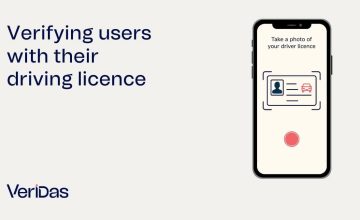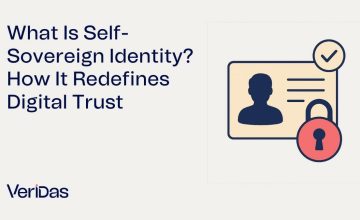Rider identity verification is a key aspect in the delivery sector in terms of user experience and security, both for the riders themselves and for the end customers who interact with them. Thanks to biometrics, this process can be performed in a fast and agile way, offering a simple user experience while maintaining a high level of security.
Why is it necessary to verify the identity of riders?
The reputation and good image of a brand depends on each of its employees. But in some companies, the burden falls especially on those workers who deal directly with customers.
One of the significant innovations of the new delivery companies was the incorporation of real-time information about the riders who make deliveries. To ensure that this information is accurate, it is necessary to verify the identity of these workers.
As an end user, knowing that those people are who they say they are brings security and confidence to the entire purchasing process.
Another key aspect is to ensure that the licenses or labor contracts of those workers are carried out by themselves, and that there is no exchange with third parties who are not listed as employees of those companies.
What methods of identity verification exist in the delivery sector?
As in other industries, there are different methods of employee verification. In the delivery sector, it is especially critical to carry out this process efficiently as employees are spread across cities, with no fixed location.
Some companies use possession or knowledge-based methods such as physical credentials (cards, badges) or access passwords. However, these methods are easily shared and vulnerable to identity fraud.
Biometrics, the most effective way to authenticate riders
There is a way to verify the identity of riders automatically, remotely and securely. With biometrics.
This is carried out with a digital onboarding process where the employee can verify their identity in less than 1 minute from any device, anywhere, anytime.
This onboarding process is a one-time-only process. From then on, riders could authenticate themselves, re-verify their identity, with a simple selfie, at any time.
There are other authentication methods such as voice authentication, which also offers a quick and easy experience that could be especially practical if riders are driving a vehicle as it only requires a 3-second audio.
Certified anti-fraud technology
Biometric solutions are equipped with fraud detection measures to prevent identity theft. From document verification, where security measures are analyzed to avoid false, modified or photocopied documents, to the detection of deepfakes or other attacks such as masks or pre-recorded audio in the case of voice biometrics.
A more modern and secure delivery sector
Several sectors have incorporated biometrics into their processes of interaction with employees and end users. In the case of banking, we find examples of multiple use cases such as account opening, or voice authentication in contact centers. Other more recent sectors such as Mobility have also incorporated these technologies, as it is the case of Acciona Mobility or Cabify.
Rider authentication with biometrics is presented as a great opportunity to further modernize the delivery sector and improve the experience of both employees and end customers.





![[FREE DEMO]: Find out how our technology works live](https://no-cache.hubspot.com/cta/default/19918211/9d2f027d-2e80-4f2b-8103-8f570f0ddc7c.png)

















